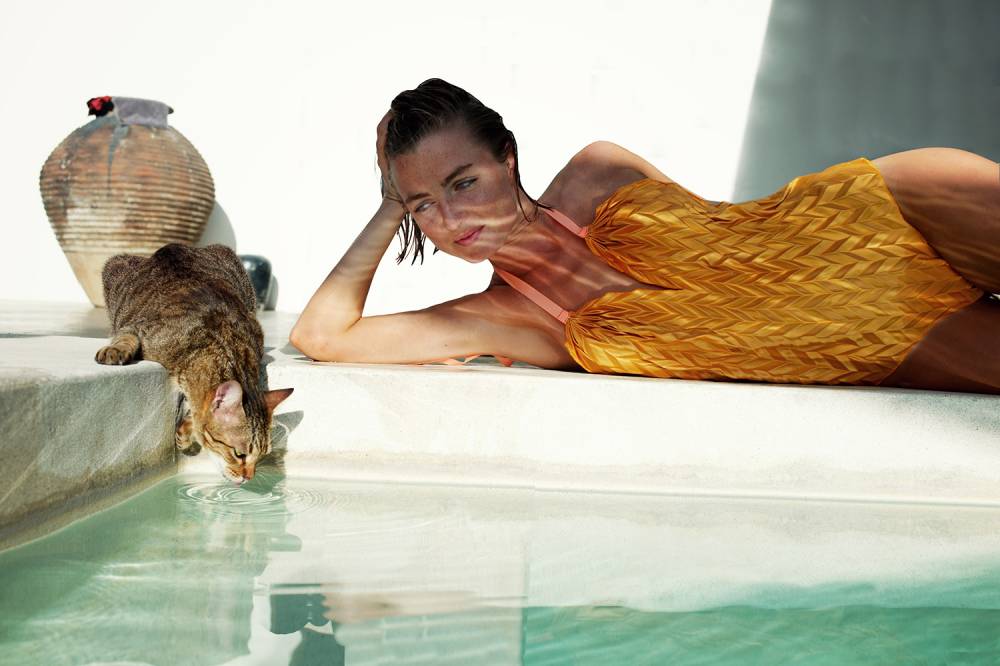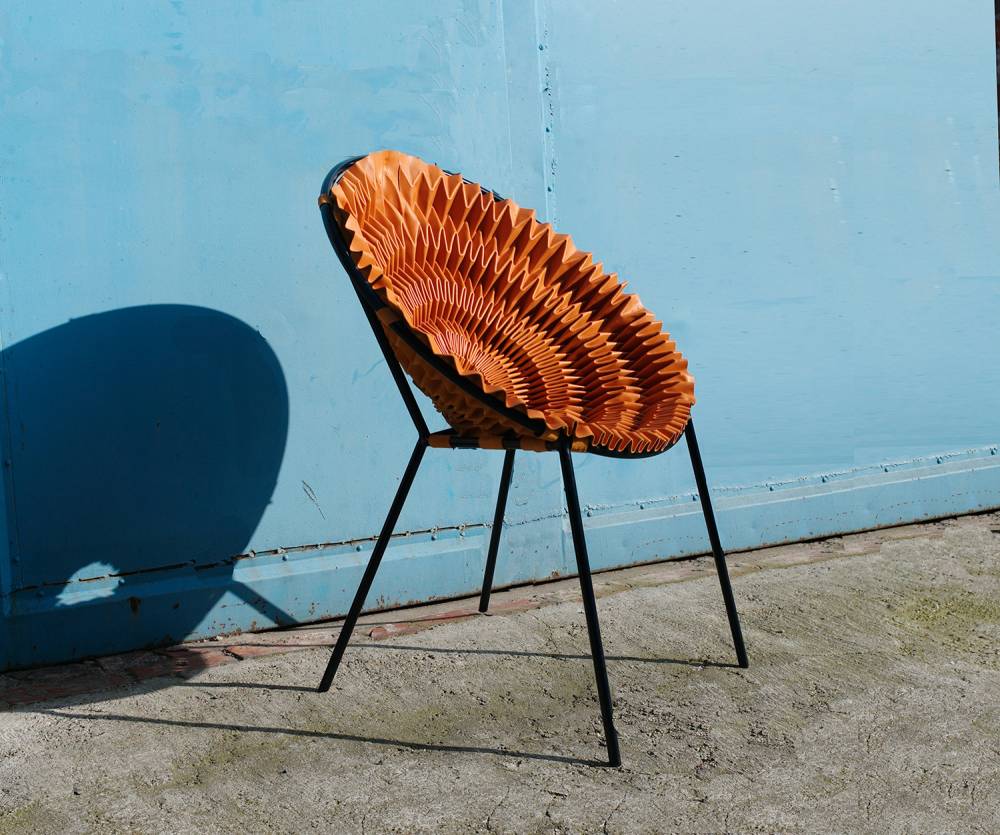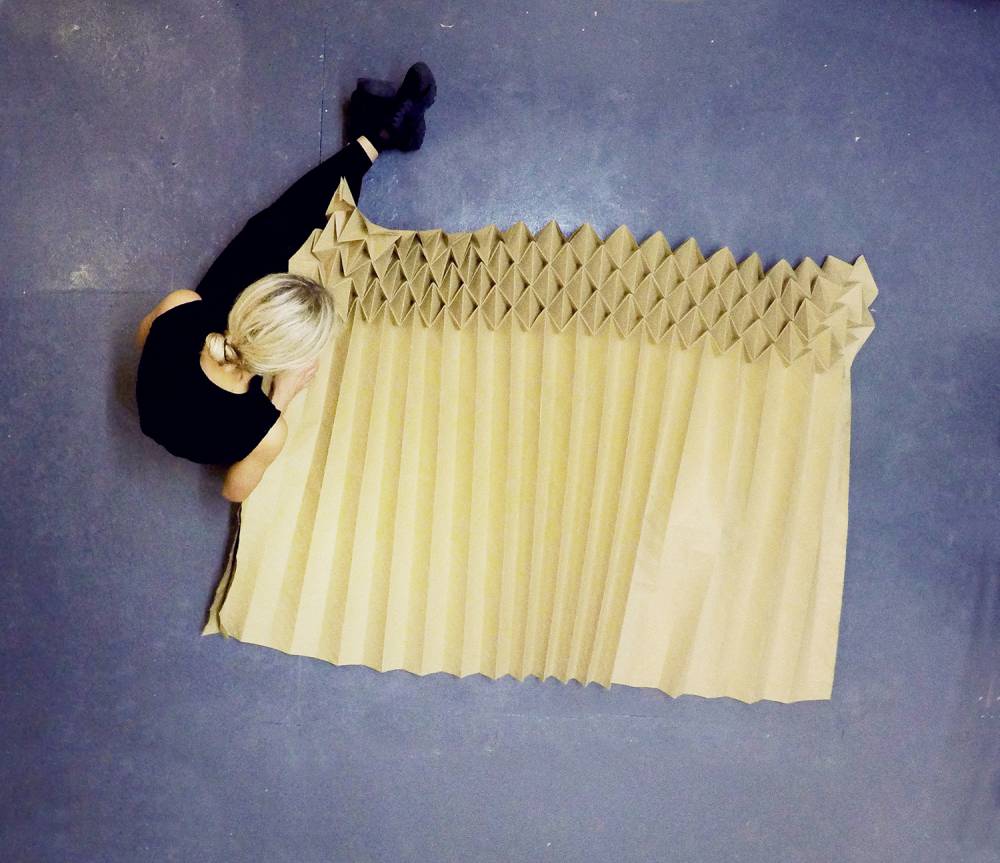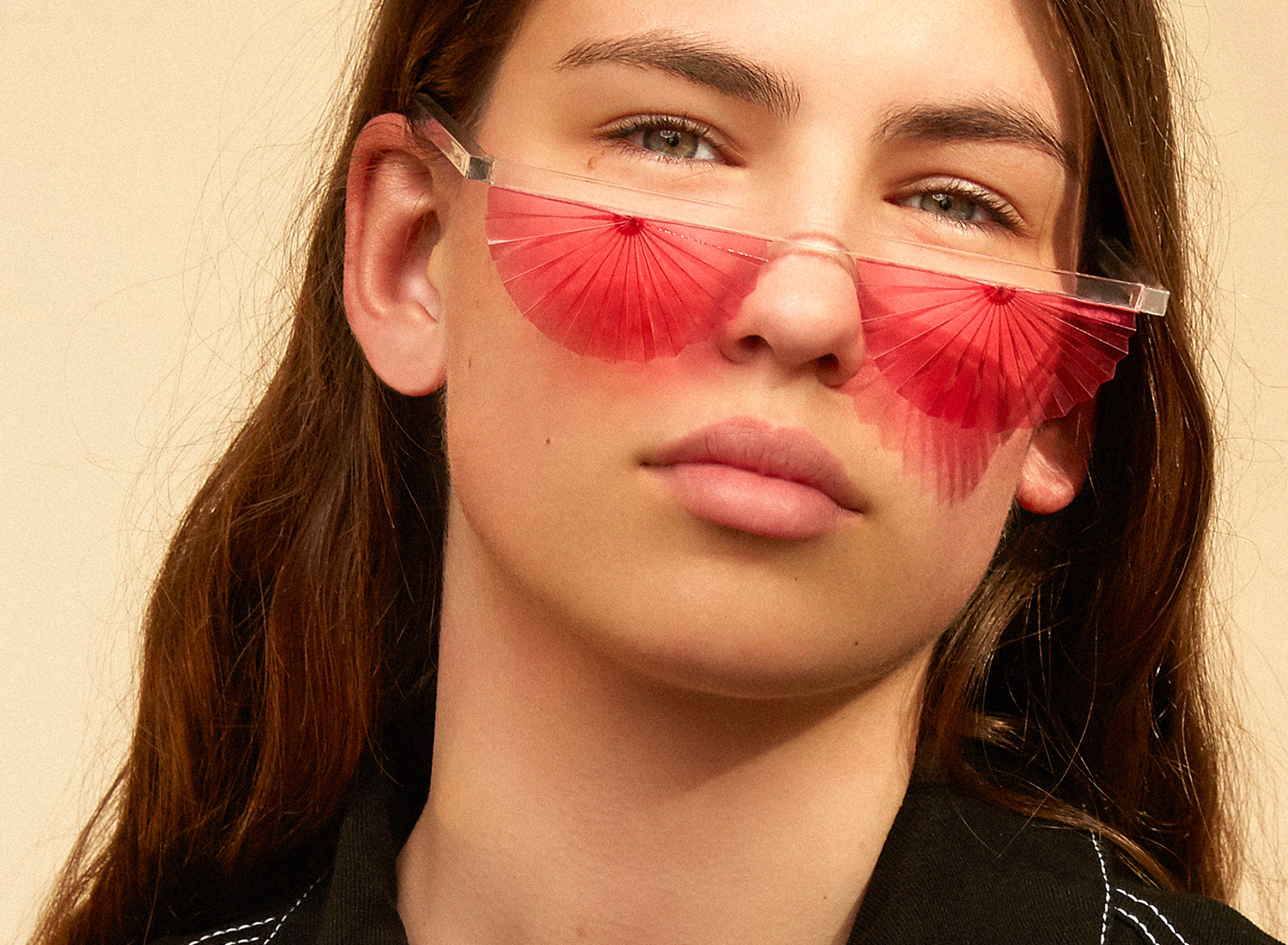“Suddenly I was allowed to do something that was just beautiful.” Interview with Jule Waibel featured by #jungbleiben
We met folding artist Jule Waibel for an interview. The young German designer and passionate yogi has her own label and has already worked for large brands like Swarovski, Adidas, Chanel, and many more. In her two studios – in Berlin and Bali – she creates playful objects and dreams of geometric shapes dancing around the moon.
In this interview, she gives insights about her education at the Royal College of Art in London, about her unique selling point, how she learned that not everything requires a function and introduces us to a world where everything is folded.

How did your education in industrial design at the Royal College of Art shape you?
You spend seven days a week in this place, in this tower, next to Hyde Park in London and in your bubble – your colourful design boot camp – surrounded by exciting characters, from extroverts to silent inventors and everyone knows: This is where great things come alive.
While the others are influencing you with their dedication, the atmosphere is extremely productive and you want to commit to the maximum. At the same time you have a lot of freedom in your education: In the second year of our studies, we only met with our tutors once a week. The rest of the time you are either focusing on yourself and your own projects or try to stimulate your ideas through discussions with the community around you. Looking back, studying with tutors like Tord Bontje, Ron Arad and many more was an enormous privilege for me and it was one of the most intense and beautiful times of my life.
Before you went to London, you studied product design at the College of Design in Schwäbisch-Gmünd.
That was very traditional. We learned things like: form follows function and that everything has to make sense. Basic knowledge of geometry, space and three-dimensionality were really hammered into us. I remember how we had to paint the correct distances of drawing pins three semesters long – until we were able to draw them without even thinking about it. We were also allowed to use colours only very late in our studies: A good design must also work in black and white, they said, colours would only trick us.

How was the transition from studying in Germany to education in England?
The classes in Germany were important for my personal development because without them I would have drifted off too far into the artistic world. But in my first year in London, I was never really satisfied with my designs, because I tried to carry through the industrial design idea that I learned in Schwäbisch-Gmünd.
What other approach did your lecturers in London give you?
They realized that my skills are more about aesthetics than about function. In the beginning I always tried to add something practical to my folding. The professors then said to me, “Jule, it’s okay if your folding figures are just beautiful.” I could finally let go. The fact that I was suddenly allowed to do something that was purely beautiful changed my whole thinking and was also a great liberation for me.

How did you find your USP?
There are countless folding techniques you can find on the Internet. I always use the two same folding patterns, the flexible, three-dimensional and the straight, static folding. With that I can create my whole design world, that’s basically all I need.
What I do in my work is changing the proportion and dimension, the size and arrangement of the folding patterns. This is how I have created uniqueness.
Another unique selling point is the materials you fold.
I take something like jeans or metal, for example, and wonder if you can fold it and if so, how to apply the folds. Do I have to steam it in heat, do I have to bend it, notch it or pour it into a mould? Then I look at the result and consider in which world it could find life and space. Is it suitable as a vase or rather as a piece of clothing? My approach, they told me in college, is learning through making.
Your mission statement on Instagram, is: “She wants to unfold the universe”.
It’s about infinity to me. There are so many materials that have never been folded, that have a whole new function, look, and aesthetics. Before all of this started here, I worked with my tutor at London University to create a scenario where the whole world is folded: the table, the cutlery, the glasses, the clothes, everything is folded. Today I know that this is possible.







Do you want to find out more about Jule Waibel? Check out the latest article at Jungbleiben.com
Illustration by Daniel Triendl. Photos provided by Jule Waibel.
Interview by Felix Diewald. Article written by Daphne Seiwald.